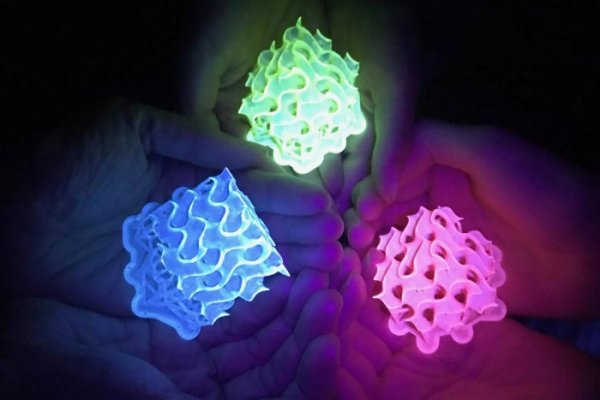According to foreign media reports, scientists have successfully produced what is known as the brightest fluorescent material in existence by overcoming some technical and long-standing obstacles. Researchers have successfully transferred the properties of highly fluorescent dyes to solid-state optical materials, which opens up new possibilities for the development from next-generation solar cells to advanced lasers. It is reported that this research is jointly carried out by scientists from Indiana University and the University of Copenhagen. They intend to solve the problem of using fluorescent dyes 150 years ago.
This problem is called "quenching", and this happens when the dye is converted to a solid state, and this situation causes the dye to gather closely together and produce electronic coupling to reduce the brightness of the fluorescence. The quenching problem plagues most of the more than 100,000 dyes currently in existence.

Amar Flood, the author of the study and a chemist at Indiana University, said: “When the dyes stand side by side in a solid state, the problem of quenching and mutual coupling between the dyes arises. They can’t help but touch each other. . Like a child sitting there listening to a story, they interfere with each other and no longer act like adults."
Flood and his colleagues believe they have found a solution to this problem by using star-shaped macrocyclic compound molecules to prevent the interaction between fluorescent molecules. When this molecule is mixed with colored dyes in a colorless solution, the dyes can maintain their optical properties while forming the so-called SMILES. In turn, these lattices can be grown into crystals, turned into dry powders, rotated into thin films, and even integrated directly into polymers.
This is a method used in previous research, but now this has a key difference. Early attempts were to use colored macrocyclic compound molecules to create space between dyes, but the research team found that with leuco dyes, fluorescent dyes leave the space needed to complete their tasks.
"Some people think that colorless macrocyclic compounds are unattractive, but they allow the isolated lattice to fully express the bright fluorescence of the dye without being hindered by the color of the macrocyclic compound," Flood noted.
The team believes that these new superbright materials have many possibilities, and also pointed out that solar energy collection, biological imaging, display technology, tunable materials and lasers are just some of the potential applications. However, at present, researchers still need to continue to study the nature of this structure in order to lay the foundation for future practical applications.
Flood said: “Because these materials are brand new, we don’t know which of their inherent properties can provide better functionality. We don’t know the limits of the materials. Therefore, we will need to have a basic understanding of how they work. It also provides a robust set of design rules for creating new properties. This is essential for putting these materials in the hands of others."
Related research reports have been published on "Chem".
Fan Light,Ceiling Fan Light,Led Ceiling Lamp Light,Led Ceiling Fan
JIANGMEN MOSCOT OPTOELECTRONIC TECHNOLOGY CO.,LTD. , https://www.zjsensorsled.com